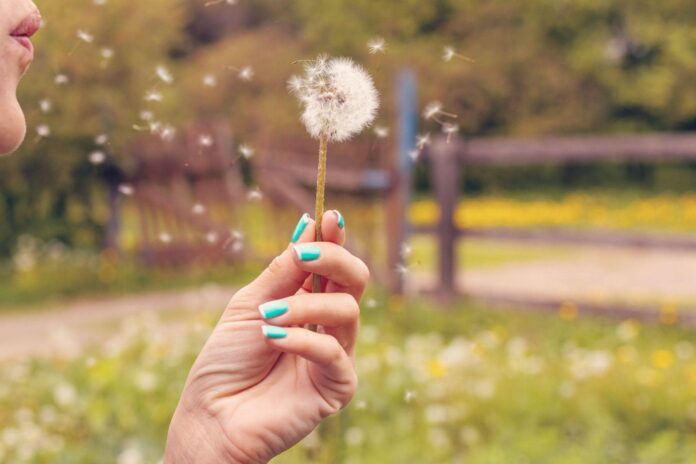Brits are being encouraged to build a hay fever friendly garden in order to enjoy the outdoors without having to worry about allergies.
The green-fingered experts at GardeningExpress.co.uk are sharing their tips on how Britons can create a low pollen garden to combat hay fever.
Severe hay fever symptoms like itchy eyes, sneezing and a runny nose prevents many people from enjoying the outdoors throughout summer.
With some careful planning and proper selection of plants, those suffering with allergies can create a low pollen garden and still enjoy their outdoor spaces this summer.
Chris Bonnett, founder of GardeningExpress said: “Hay fever sufferers know just how severe and disruptive their symptoms can be and for a lot of people this actually stops them from spending time outdoors.
“We wanted to give people advice on how to build a hay fever friendly garden so that everyone can enjoy the outdoors this summer.
“If you or someone you know suffers with allergy symptoms then you may want to look at some of the changes you can make in your garden to keep the pollen as low as possible.
“There are simple things you can do to help keep the allergies at bay like keep the lawn short and place flowers away from seating areas.”
How to create a hay fever friendly garden:
Mowing the grass
Although this task may seem like a hay fever sufferer’s worst nightmare, keeping your grass mowed will prevent grasses from flowering. This will help curb one of the biggest allergy triggers. Whilst mowing, pop on a face covering or mask.
Research and plant low pollen plants
There are plenty of low pollen plants out there that will still create a gorgeous garden. Things like roses, camelia and fruit trees are just a few great options. Try to avoid wind-pollinated flowers as these cause pollen to float around in the air. Instead opt for insect-pollinated flowers.
Think about the layout of the garden
Be smart when it comes to the layout of your garden and try positioning the seating away from pollen hotspots like planting beds. You may also want to keep plants away from the house to prevent pollen from making its way indoors.
Prevent weeds
Weeds such as creeping thistle, dandelions and ragwort have a bad reputation for causing hay fever symptoms. Because of this, it is best to stay on top of weeding and remove them before they can flower.
Sprinkle your garden
Some plants stop shedding pollen in wet conditions, so sprinkling your garden with a hose or sprinkler can help lay some of the pollen ahead of an afternoon of gardening or sunbathing.
Timing is everything
Pollen count tends to be at its lowest in the afternoon, so it’s worth waiting until later in the day to enjoy your garden.
For more gardening advice please visit GardeningExpress’ knowledge hub here
Help keep news FREE for our readers
Supporting your local community newspaper/online news outlet is crucial now more than ever. If you believe in independent journalism, then consider making a valuable contribution by making a one-time or monthly donation. We operate in rural areas where providing unbiased news can be challenging. Read More About Supporting The West Wales Chronicle























